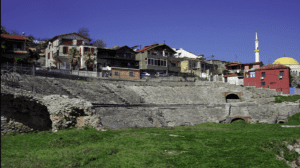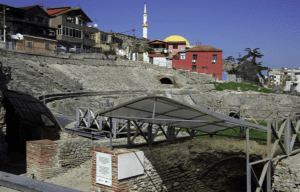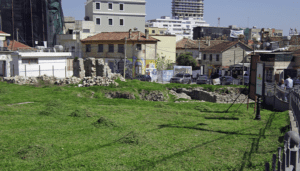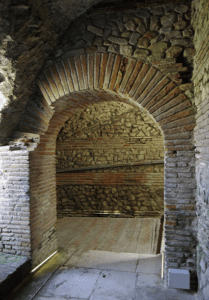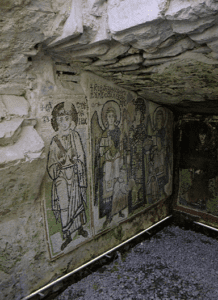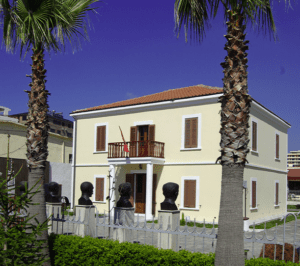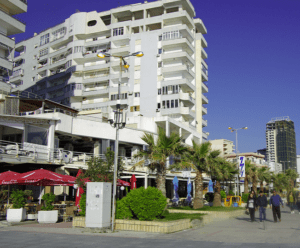Durres is the second largest city in Albania and an important port on the Adriatic sea. The new promenade along the sea front is lined with 1990s high rise hotels and restaurants.
Most people however visit for the history. Durres was settled by the Illyrians in the C7th BC around a large natural harbour. The city thrived during Roman and Byzantine times. The city walls date from the Byzantine settlement in the C5th and C6th. They were further reinforced with towers in the C15th by the Venetians.
It’s fortunes waned during Ottoman times and by the end of the C19th it was just a small village. After Independence in 1912 it again became an important port.
Top of the list of sites to visit is the Roman Amphitheatre dating from C2nd and the largest in the Balkan peninsula, seating between 15,000 – 20,000 spectators. It fell out of use in the C4th. This could have been the result of damage from a major earthquake in 345/6 or a revulsion against blood sports and the expense of importing wild animals.
The site was only rediscovered in 1966 and has still only been partially excavated. Much of it is still covered by housing. It is quite exciting to visit as you really do get an impression of its size as well as the amount that is still lost and buried. However it is not a place to visit if you have serious mobility problems. There are steps and paths can be uneven and rough.
It was originally an elliptical shape with seating built up the sides of the hillside. It is constructed of alternate rows of bricks and stones bound by mortar (opus incertum) which was designed to resist earthquakes.
Steps near the ticket office lead into the vaults and underground passageways where the animals were kept. Further round is the Imperial Entrance where the aristocracy arrived in their carriageways. This is thought to extend into the centre of Durres.
The local Christian community took over the amphitheatre in Byzantine times and it became a Christian cemetery. A small chapel was built in the passageways for burial services This had a small baptismal well at the entrance. At one end is a small apse. On the back walls are remains of mosaics.
The history of Durres is told in the Archaeological Museum, a large modern building in the centre of the city, with some large pieces of carved masonry on display outside. Unfortunately photography is not allowed inside the building.
It is very attractive building with a tall “central atrium”:http://argophilia.com/albania/wp-content/uploads/2011/08/archeological-museum-durres.jpg with pillars and smaller display cases round the outside. The ground floor has Illyrian and Roman artefacts from the local area. In March 2017 work was still on going on the Byzantine display on the first floor. There were small labels at the top of each display case in Albanian and English. There were beautiful Illyrian vases including ‘red figure vases’. There were small statues, pottery, amphorae, jewellery, coins, oil lamps and Roman glass as well as small statues of Artemis from a local temple.
The museum is a manageable size and it is easy to see and enjoy all the exhibits without going into overload. My camera finger was twitching though. If you do want to take pictures of Illyrian and Roman pottery the small “museum”:http://wasleys.org.uk/eleanor/otherholidays/albania/day_five/five_five/index.html at Apolonia does allow photography.
There is a small shop selling a basic selection of books but no postcards – something we found throughout our trip.
There are more pictures of Durres “here.”:http://wasleys.org.uk/eleanor/otherholidays/albania/day_one/index.html
We visited Durres as part of a eight day Classical Tour of Albania. All the information and pictures can be found “here.”:http://wasleys.org.uk/eleanor/otherholidays/albania/index.html
